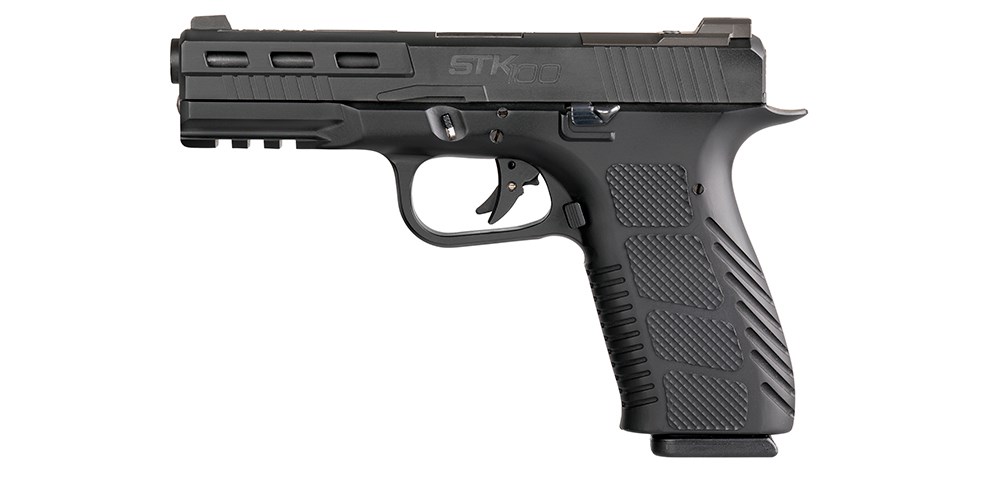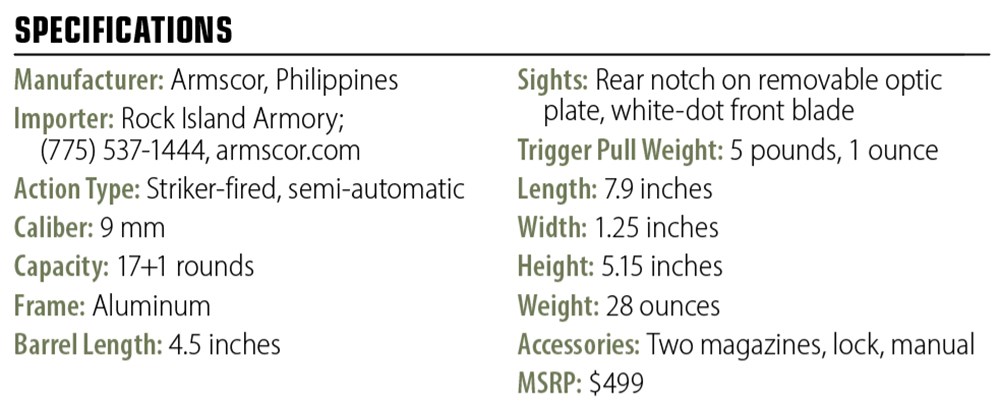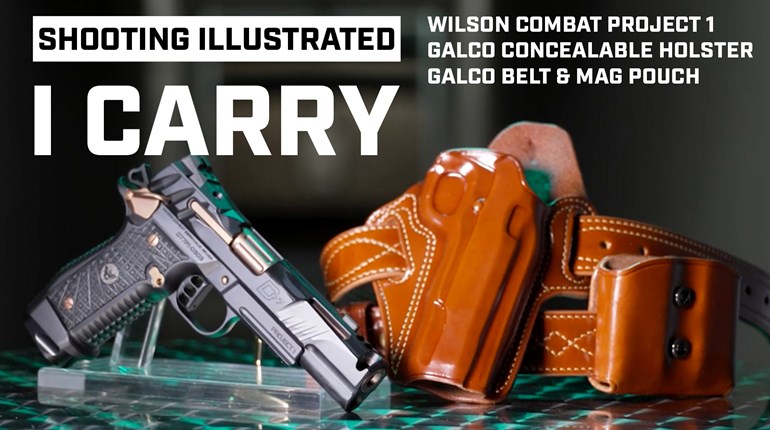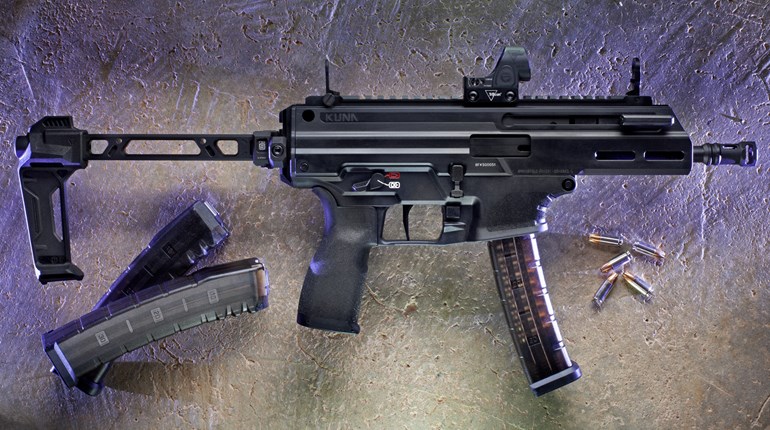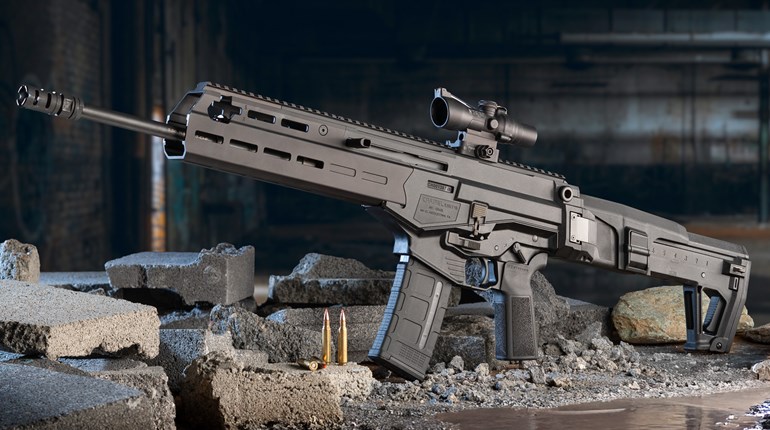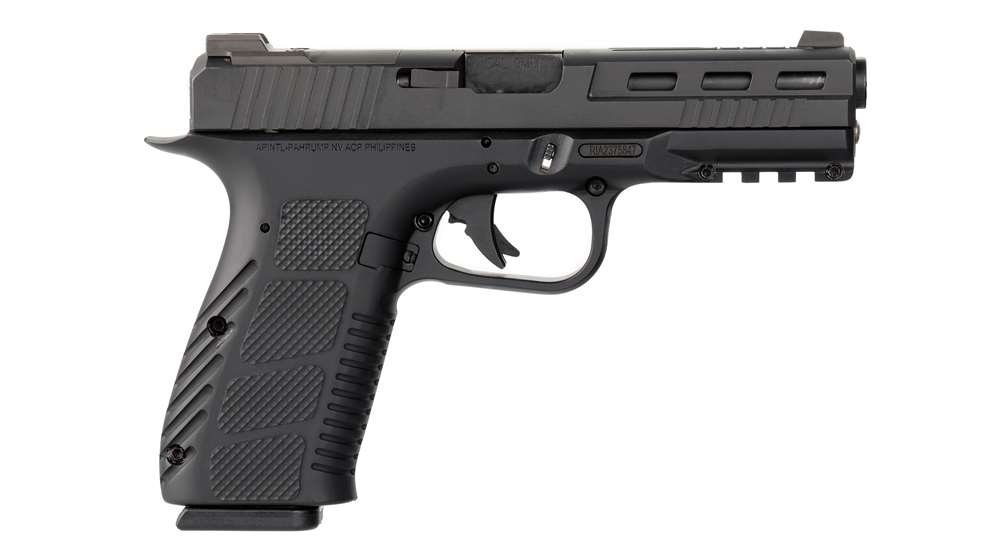
Not everyone is enamored of polymer-frame pistols, so Armscor designed the STK100 to be a Glock-compatible 9 mm pistol with an aluminum frame. It accepts Glock magazines, sights, internals and other accessories, but adds the rigidity of a metal frame—with its added mass—as an extra.
But the manufacturer didn’t stop there; it added more. The rear of the frame has angled grooves, to aid the non-slip grooves on the frontstrap and the serrated panels on the sides, helping to keep the STK100 solidly in your grip during recoil. Armscor also extended the tang, so the web of your hand can get in on the action of dampening muzzle rise. Another detail is the grip angle. A lot of shooters feel the standard Glock angle does not point the same as other pistols, with the 1911 being the baseline against which all are measured. So, Armscor designed the STK100 with a 1911-angled grip. While point-shooting isn’t the thing it used to be in the old days (nor should it be), pointing consistently aids in indexing on the draw in order to get the first shot off quickly and accurately. The frame also includes an accessory rail on the front, where the front of the rail, as well as the slide, have been rounded for easier holstering.
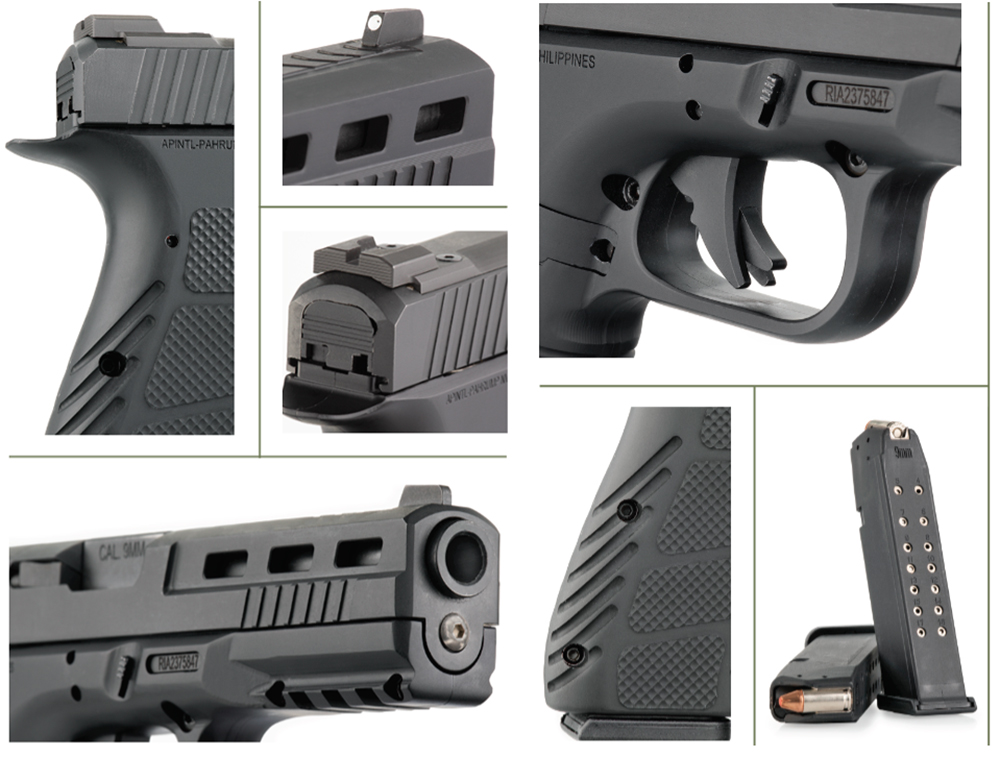
Armscor manages these details by manufacturing the frame in a novel way: it is machined, not by making it one piece, which requires specialized broaches, but by making it in two halves and then assembling the two halves into a frame, like a clamshell. This can all be done on CNC machining centers, and such precision is what we have come to expect in the 21st century. The two halves are bolted together by means of six high-strength fasteners, which you can see when you inspect the frame. These are not meant to come out during cleaning, nor are they user-serviceable. Leave them alone.
Also CNC machined is the slide, which loses the 2x4 aesthetic of the Glock and replaces it with a sculpted slide, with rectangular cutouts added to the slide as well. This lightens the slide (and adds style), so the slide cycles a bit faster and brings the sights back on target a bit faster. The rounded contours of the slide top also make the STK100 just a bit less bulky in the holster, adding comfort to your daily carry.
The sights are Glock-compatible, but the rear has even more to recommend it. The rear-assembly notch is part of a removable plate, and once the plate is off you can install a red-dot optic. The recess is machined to the Vortex Venom pattern, and any other optic that uses the same footprint will fit as well. Alas, removing the plate also means removing the rear sight, so if your optic’s battery dies, you have no rear sight. Thankfully, optic-battery lives are quite good these days.
The STK100 came with a pair of KCI magazines, which are Glock-compatible magazines made in Korea, and they worked without fail. A random selection of other brands and Glock OEM magazines spanning multiple decades also all worked faultlessly. If you want larger-capacity magazines, anything by or for Glock should work. The STK100 proved accurate; it, produced pleasantly small groups, and the aluminum frame’s added weight dampened recoil, even with the brisk velocities produced by the various 9 mm ammunition tested.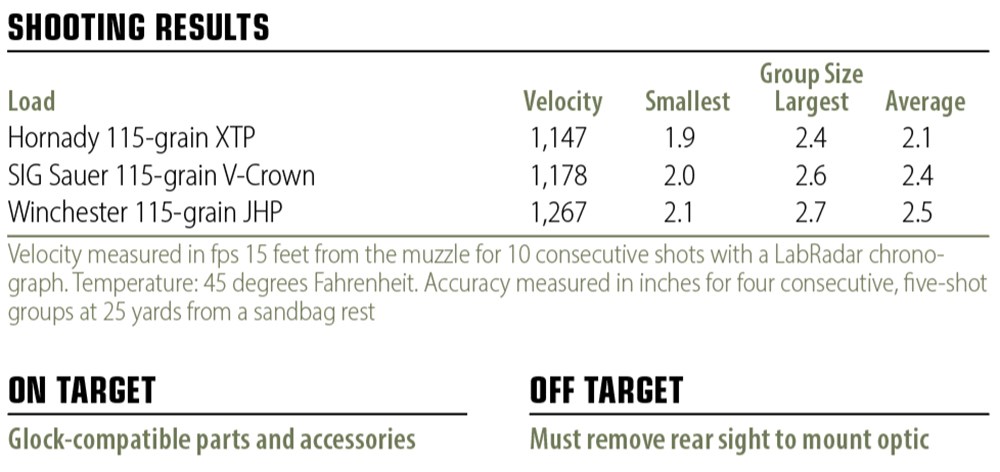
So, where does the STK100 fall? If you want the lightest possible carry gun, this isn’t it. Polymer-frame handguns are going to tip the scales 3 to 4 ounces lighter. As a daily carry consideration, that is not much, but it is a fact. That said, a good holster will mostly negate such a small difference. The extra weight will dampen felt recoil, however, so it’s not necessarily a negative. If you are looking for the most competitive-shooting-oriented handgun, the STK100 will offer superb accuracy, lower felt recoil and one thing an aluminum frame does that a polymer one can’t: a better trigger. The flex of a polymer frame can make trigger pulls less crisp, whereas the more rigid aluminum frame of the STK100 improves upon that. And to make that an even bigger advantage, the interior of the STK100 is a one-piece steel chassis, so there is no flex in the trigger assembly as you press the trigger to the rear.
You get all that for a price in the same ballpark as the various polymer-frame pistols, so going to aluminum doesn’t cost you extra, but it does offer benefits consumers won’t find in popular polymer-framed handguns.